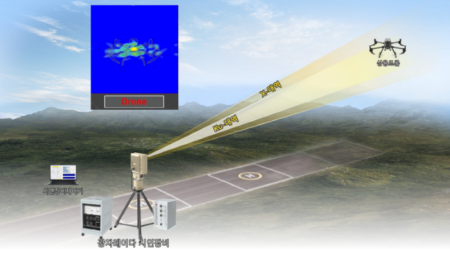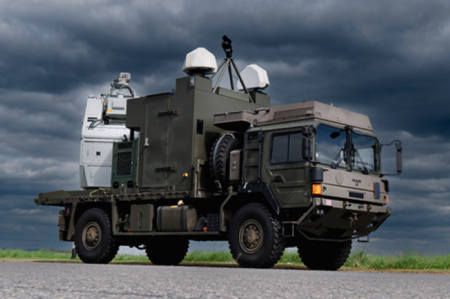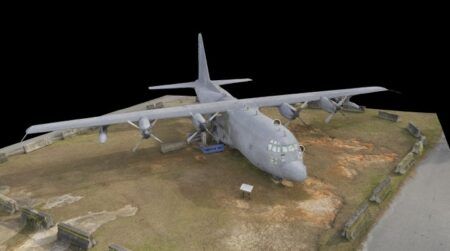A team working with the US Air Force’s 412th Logistics Test Squadron recently completed tests on an all-electric aircraft power supply unit at Edwards Air Force Base in California.
Called the Hybrid Electric Flight Line Cart Technology Pathfinder (HEF), this unit was the first step in developing a new system for providing electric power to aircraft during maintenance on the flightline and inside hangars.
Aircraft produce their own electric power when the engines are running, but when the engines are off, maintainers performing system checks and other maintenance typically rely on a diesel generator to support electrical power requirements.
Tom Layne, a representative from the Air Force Research Laboratory, said this concept demonstrator is essentially a large bank of batteries coupled with the necessary power conditioning equipment to make the machine compatible with multiple types of aircraft.
Representatives from the Air Force Research Laboratory Materials and Manufacturing Directorate, Concurrent Technology Corporation — the contractor that built the power supply — and the 412th MXLS successfully ran the unit through its paces on the Edwards flightline, testing it with an F-16, a KC-135, and the biggest power draw, a C-17.
The unit is designed to charge overnight on the standard power grid, or it can be quickly recharged on the flightline using existing diesel generators. Staff Sgt. Steven Schrader, a logistics test evaluator with the 412th MXLS, said that during the C-17 testing, the crew completed all the tasks before the unit needed a recharge.
“Then we threw more at it,” he said. “It worked!”
Tech. Sgt. Kevin Mathis, 412th MXLS logistics test evaluator, commented on the robustness of the unit, compared with the legacy diesel systems: “When you’re working with a C-17, and you perform a rapid succession of checks, a diesel generator can’t handle the load,” he said. “If this happens, you have to shut down and reset the whole system.”
Some of the advantages of this system, according to Layne, are lower noise and emissions than a conventional diesel generator and less maintenance.
Staff Sgt. Alex Rini, a logistics test evaluator with the 412th MXLS, commented on the decreased noise. “The lack of noise from the diesel generator gives us increased situational awareness,” he said. “This means improved safety.”
Another benefit of the decreased noise level was evident when Rini and Schrader were able to talk from the ground to the cockpit without the use of the aircraft’s communication system during the C-17 test.
Following the physical tests, the team discussed the pros and cons of the system, and talked about the future of the system. According to Layne, one of the next steps is to reduce the overall size of the HEF to make it more manageable for the maintainers.
March 1, 2017




